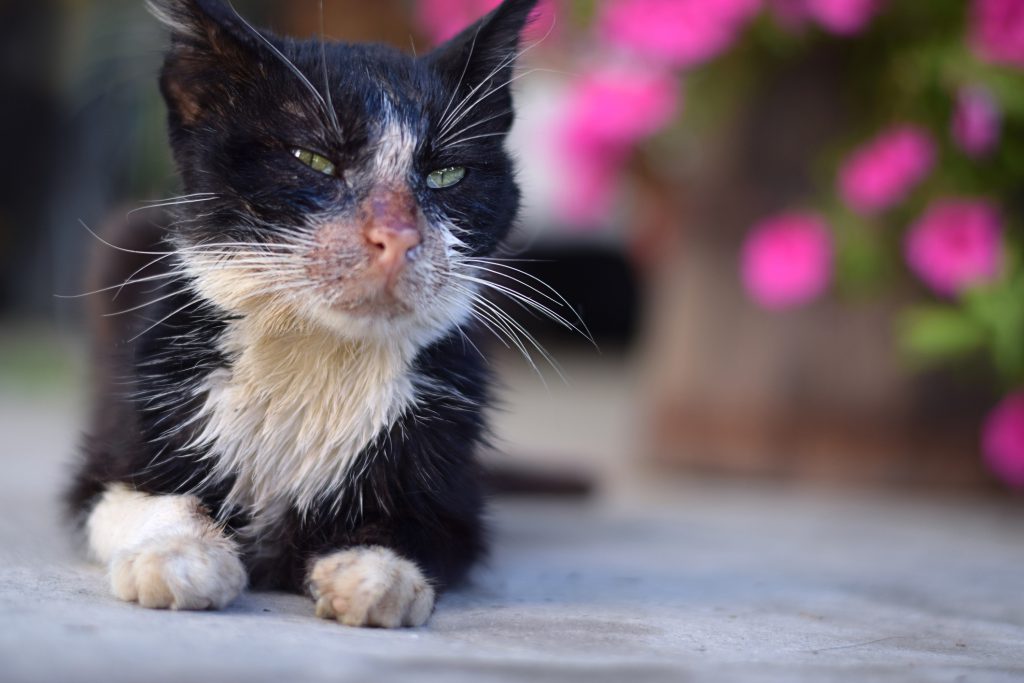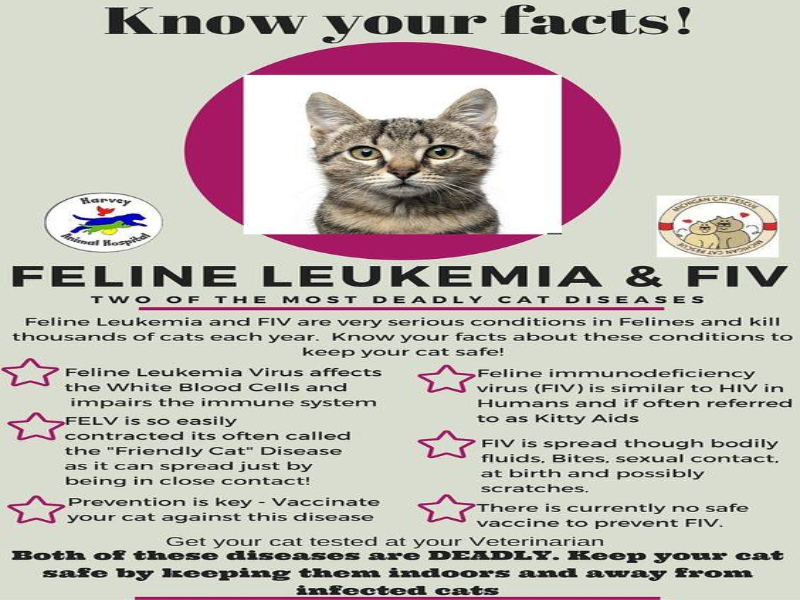Table Of Content

FeLV invades various cells of the cat's immune system and blood-forming tissues. Invasion into the cell leads to death of the cell or a mutation (change) in the cell’s genetic code. Such a change can make the cell potentially cancerous, although this change may not occur for months to years after infection. Other oncoviruses include feline sarcoma virus (derived from FeLV), mouse leukemia viruses, and two human T-lymphotropic viruses. It’s crucial to keep up to date with your cat’s vaccinations and to always be in conversation with your veterinarian about preventative measures for FeLV and other diseases. Cats that have a “regressive” infection may be slightly more complicated because of the variations of the viral levels in the blood.
Recovery and Management of Feline Leukemia Virus (FeLV)
There are several types of mites cats can get, including Mange and Scabies mites. Diagnosis of FeLV infection is relatively simple in cats with Progressive Infection. A rapid blood test can be performed which is able to detect parts of the virus in the blood of an infected cat. This test is very accurate and reliable, although false results may rarely occur. This is why sick cats may be tested again for Feline Leukemia virus after previously testing negative.
What Are the Feline Leukemia Symptoms?
Also, be attentive to your cat’s signs to treat the illness as soon as possible. If you are introducing a new cat to your household, especially one that may have been exposed to FeLV, you should get them tested before introducing them to your other cats. In large colonies of cats, FeLV can be controlled through routine testing, quarantine, and vaccination schemes. Your veterinarian will be able to do this quick test in-house, and it involves taking a small amount of blood and using a FeLV SNAP test, which will demonstrate either a positive or negative result. Here are the most common reasons cats lose their fur and how where they lose it can indicate what they’re struggling with.
Dog Lethargy: Causes and Treatment
If your cat has feline leukemia and is allowed access to the outdoors, be sure it is under supervision. It is also important to prevent any cat interactions, such as fighting. If your cat enjoys the outdoors, but you want to limit its exposure to the elements, consider a catio. Always avoid allowing shared food/water bowls and litter boxes between affected and non-affected cats to reduce risk of transmission. Affected cats are managed medically by treating any secondary infections that can result from the disease. Cats infected with feline leukemia virus often develop secondary skin, upper respiratory tract, eye, or urinary tract infections due to their immune system being compromised.
Although there are some causes of hair loss that you have little control over, there are a few things you can do to at home to help make sure your cat's skin and fur remain healthy. Feline endocrine alopecia is actually a rather rare condition characterized by hair loss on the abdomen, inner legs, and genital region. The exact cause of the condition is not currently known, but it's believed to be linked to hormone levels.
Feline Leukemia (FeLV) Vaccines for Cats: A Complete Guide (Vet Answer) - Catster
Feline Leukemia (FeLV) Vaccines for Cats: A Complete Guide (Vet Answer).
Posted: Mon, 15 Apr 2024 07:00:00 GMT [source]
Feline Leukemia-Induced Alopecia is a distressing condition that can affect cats of all ages. It is caused by the feline leukemia virus, a contagious disease that weakens the cat’s immune system and leaves them susceptible to a host of other illnesses. The most visible symptom of feline leukemia is hair loss, which can be partial or complete, and can occur anywhere on the cat’s body. Although losing fur in certain areas commonly indicate underlying conditions, it’s not a final diagnosis and doesn’t rule out other diseases or infections. It’s best to take your cat to the vet’s office to be checked, run tests and find out exactly what’s causing their hair loss. Contact with saliva from infected cats is a primary mode of transmission because the concentration of the virus is high in saliva.

A physical examination will likely involve checking the extent of hair loss, as well as how easily hair falls out. The outermost layer of the skin will be examined to determine if it peels. Additionally, the veterinarian will probably check the cat’s footpads for cracks. Because this condition is linked to cancer, many parts of the body are affected. There is the initial tumor and any additional cancer that has spread internally, and externally; the skin will then display lesions and cats will lose hair. Weight can also be affected, with some animals refusing to eat (anorexia).

It has or had normal hair follicles at one time, and is or was capable of producing structurally normal hairs. Disease may destroy the hair follicle or shaft or interfere with the growth of hair. Disease can cause the cat discomfort (for example, pain or itchiness) leading to self-trauma and loss of hair.
Luckily, in most cases, hyperthyroidism can be easily controlled with medication or radioactive iodine therapy (I-131). If a cat tests positive for feline leukemia, it should not be vaccinated, as it puts excess strain on its immune system. Any new cat should be tested for feline leukemia and FIV prior to being introduced to other cats in the household. Management of a cat with feline leukemia may require more frequent cleaning of the eyes and ears to keep them free of debris. Secondary skin, respiratory, eye, ear and urinary tracts can be common in cats with compromised immune systems, so it’s helpful to keep them clean. Commercial ear cleaners, like Epi-Otic or Epi-Klean, can be used to clean out any waxy debris in the ear canals.
Cats who have reached this stage likely do not have much longer to live, although your vet can tell you for sure how the illness is progressing for your pet. Flea bites can lead to itching and irritation, prompting excessive scratching and grooming, which in turn results in hair loss. Common locations for hair loss due to fleas include along the back, near the base of the tail. Regular flea treatment is recommended to prevent and address this issue. Hair loss in cats is almost never normal and can be due to serious health issues such as allergies, fleas, stress, pain, or ringworm.
In the first stage, infected cats show very little signs of disease as the virus enters their mouths and replicates on their tonsils. A little less than one-third of cats can eliminate the virus in this stage—if their immune system is healthy. For the remaining two-thirds of cats, the virus will spread to the lymph tissue and intestines, leading to shedding of viral particles in the feces in addition to the saliva. In advanced stages of the disease, it infects the bone marrow as well. Once the virus gets into the bone marrow it cannot be cleared and these cats are persistently infected for life. Those with a regressive infection are more likely to have milder clinical signs of infection.























